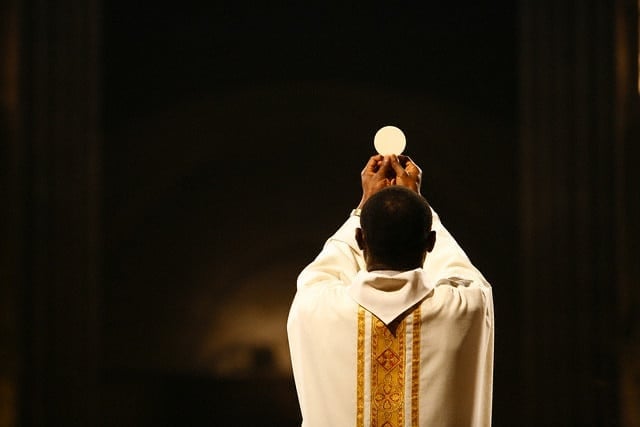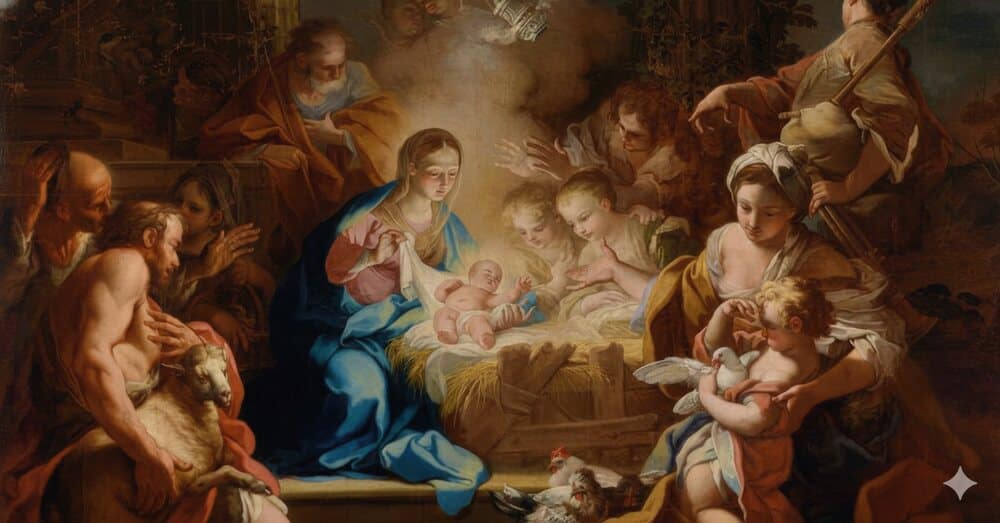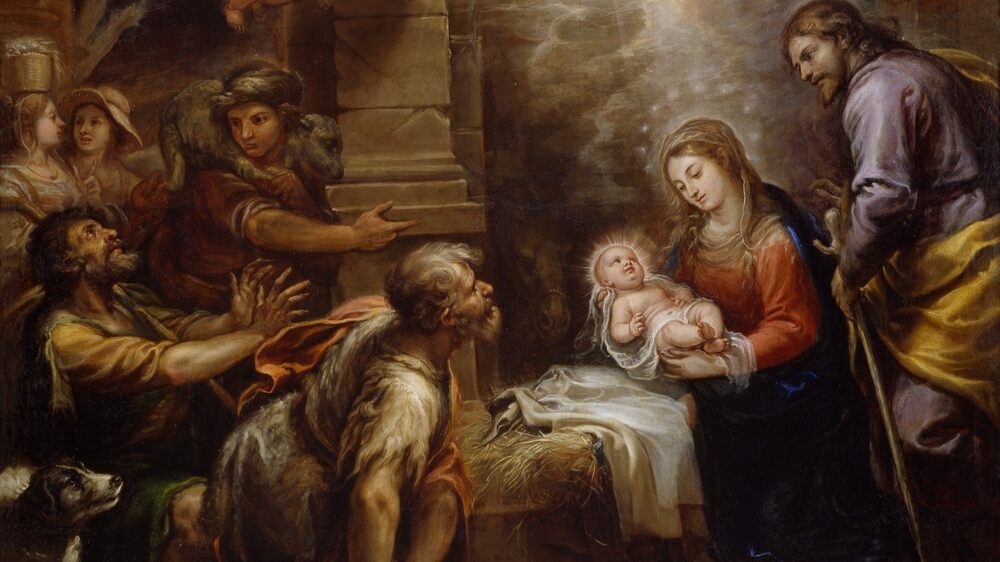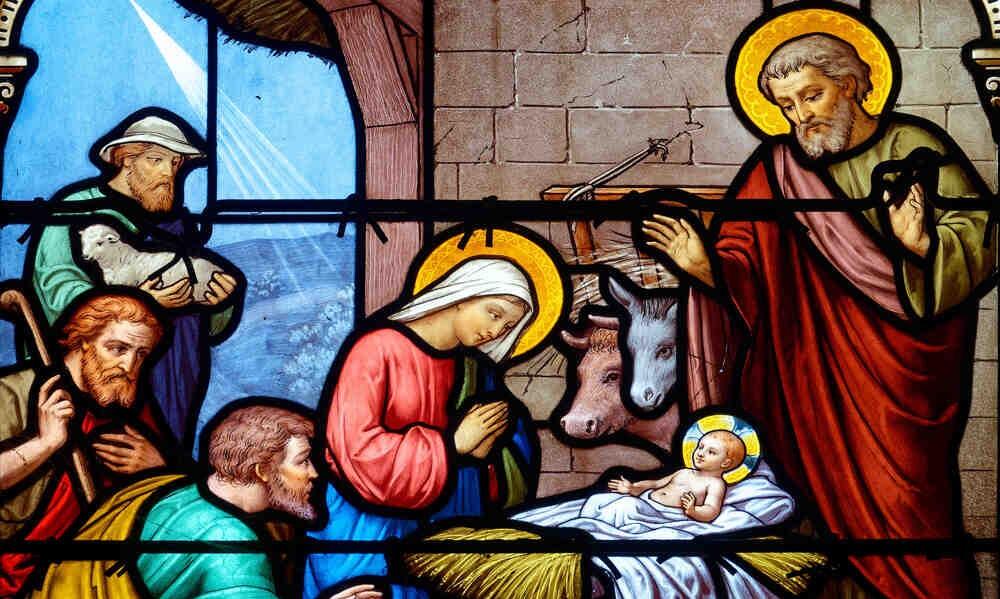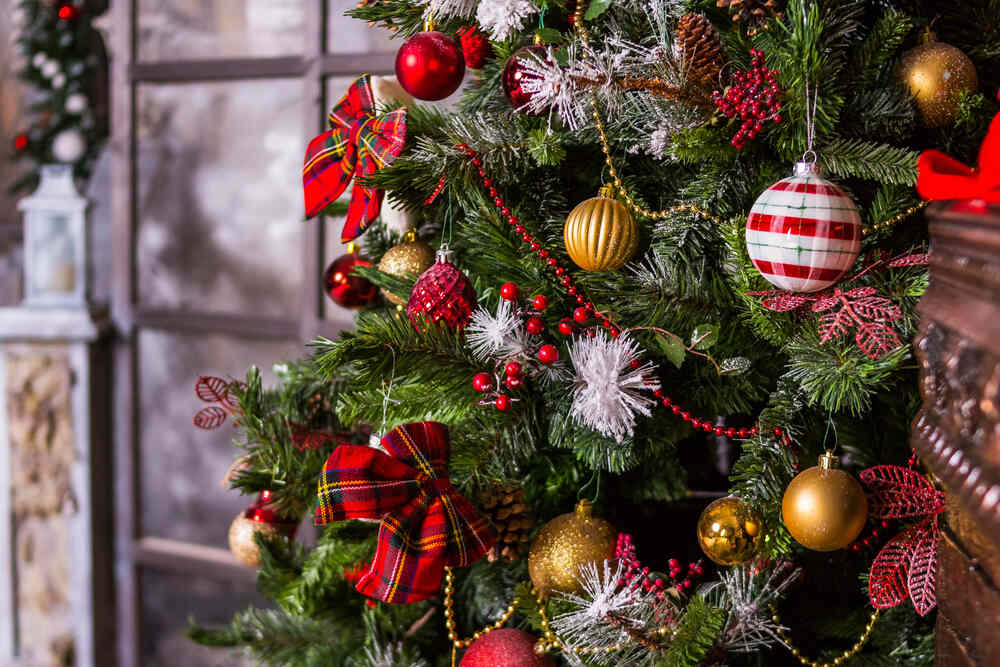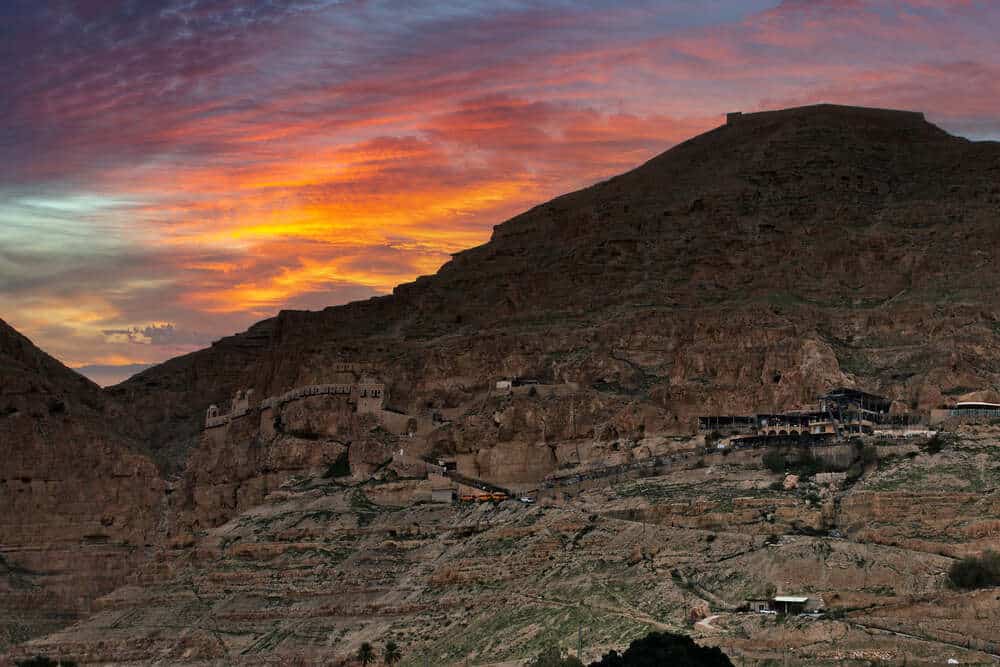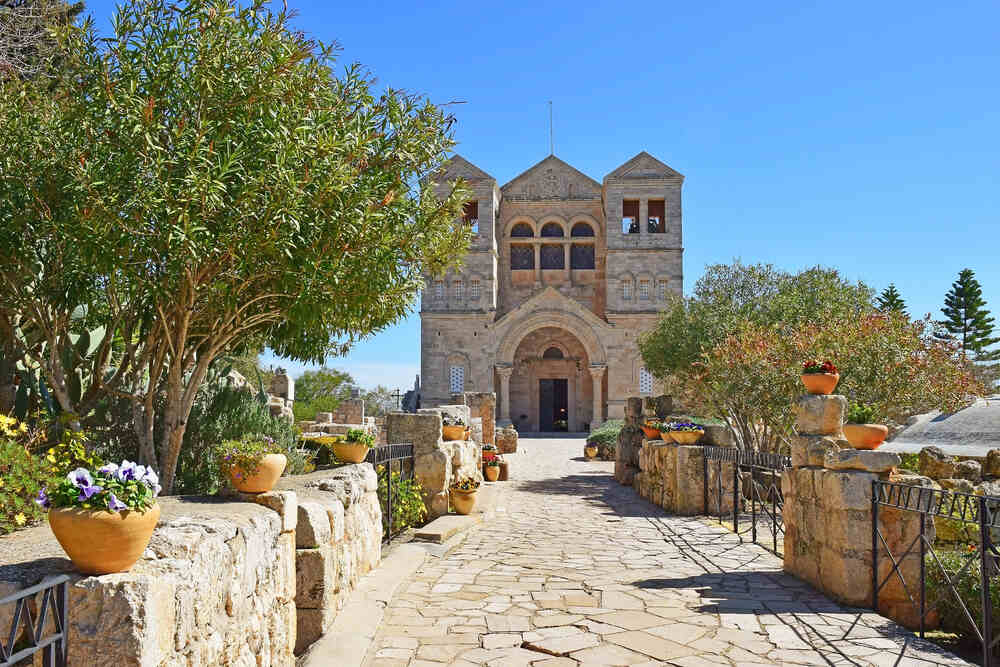Of all the parts of the Mass, the Liturgy of the Eucharist is undoubtedly the most important. In it occurs the most impressive miracle of all. Jesus becomes present in the Eucharistic species with His entire being: Body, Blood, Soul, and Divinity. Although with our senses we see bread and wine, Our Lord is truly there, alive and glorious.
Jesus becomes present in the Blessed Sacrament to offer Himself again to the Father as a victim. He is immolated bloodlessly for us, for our salvation. He intercedes before God to obtain His forgiveness for us. It is exactly the same sacrifice as that of Calvary.
As St. John Chrysostom taught:
“The same Christ who once offered Himself in sacrifice is the one who now immolates Himself for us”.
St. Ignatius of Antioch stated:
“The Eucharist is the flesh of our Savior Jesus Christ, flesh that suffered for our sins”.
The Church, following the words of the Lord Himself at the Last Supper, celebrates this mystery with profound reverence and love:
“Do this in memory of me” (Lk 22:19)
Next, we will examine each of the parts that compose the Liturgy of the Eucharist, accompanied by quotes from the Roman Missal and teachings of the saints.
You can use the Catholic Mass Times app to find the nearest Catholic church with Mass, Confession, and Adoration schedules. It will surely be useful! Download it now.
The Liturgy of the Eucharist consists of:
1. Offertory and Almsgiving

- Presentation of the gifts:
The Liturgy of the Eucharist begins with the presentation of the gifts.
When the Lord instituted the sacrament of the Eucharist, He used bread and wine. As the Holy Mass reiterates the actions of the Last Supper, it is necessary that the bread and wine are already prepared to begin the sacrifice.
While the priest prepares everything for the sacrifice, the faithful deposit their alms for the personal sustenance of the celebrant and to financially contribute to the works of the Church. St. Cyprian recommended:
Let no one participate in the Eucharist without first having offered something.
On the altar, the celebrant places the paten and the ciborium with the hosts he will consecrate. He elevates the paten, offering it to God the Father:
- The drop of water:
According to a Jewish ritual, in the Paschal cup wine with a little water had to be placed. Christ Himself did this at the Last Supper. Thus, this same custom passed to the early Church.
When the priest pours the drop of water into the wine, he prays quietly:
The water symbolizes the two natures of Christ: human and divine. It also recalls the water that flowed from the Lord’s side on the cross. Additionally, it represents the faithful people, thirsty, who immerse themselves in Christ through faith and charity. The union between the soul and Jesus is so strong that nothing can destroy it, just as it would be impossible to separate the water from the wine.
Next, he elevates the chalice and offers it to God the Father:
Then, he bows profoundly, with humility and acknowledging his sins, and prays silently:
- Incensation of the offerings:
Then, in solemn Masses, the priest incenses the offerings to make them rise, like smoke towards the throne of the Most High. He also incenses the altar and, finally, an altar server incenses the priest and then the people of God, who should stand.
- Washing of hands:
The priest washes his hands with a little water. Indeed, the most precious things should be touched with clean hands. This rite is a reminder that, to offer the sacrifice, it is necessary to be purified from all stains of ordinary life. While doing this, he prays:
- “Pray, brethren”:
After washing his hands, the priest invites the faithful to pray for him. He makes this plea at the moment when, having finished the preparation of the offerings, at the front and on behalf of the community, he is about to present himself personally before God. He asks those present to pray that he may be worthy to celebrate the sacrifice:
℣. Pray, brethren, that my sacrifice and yours may be acceptable to God, the almighty Father.
℟ May the Lord accept the sacrifice at your hands for the praise and glory of His name, for our good and the good of all His holy Church.
- Prayer over the Offerings:
The offertory concludes with a prayer over the offerings, which varies according to the liturgical season. Its purpose is to deliver the gifts that have been set apart to become the Body and Blood of Christ.
This is an example from the Easter season:
Sanctify, O Lord, by Your kindness, our offering, and through it, make us an eternal offering to You. Through Jesus Christ, Our Lord. Amen
2. Eucharistic Prayer
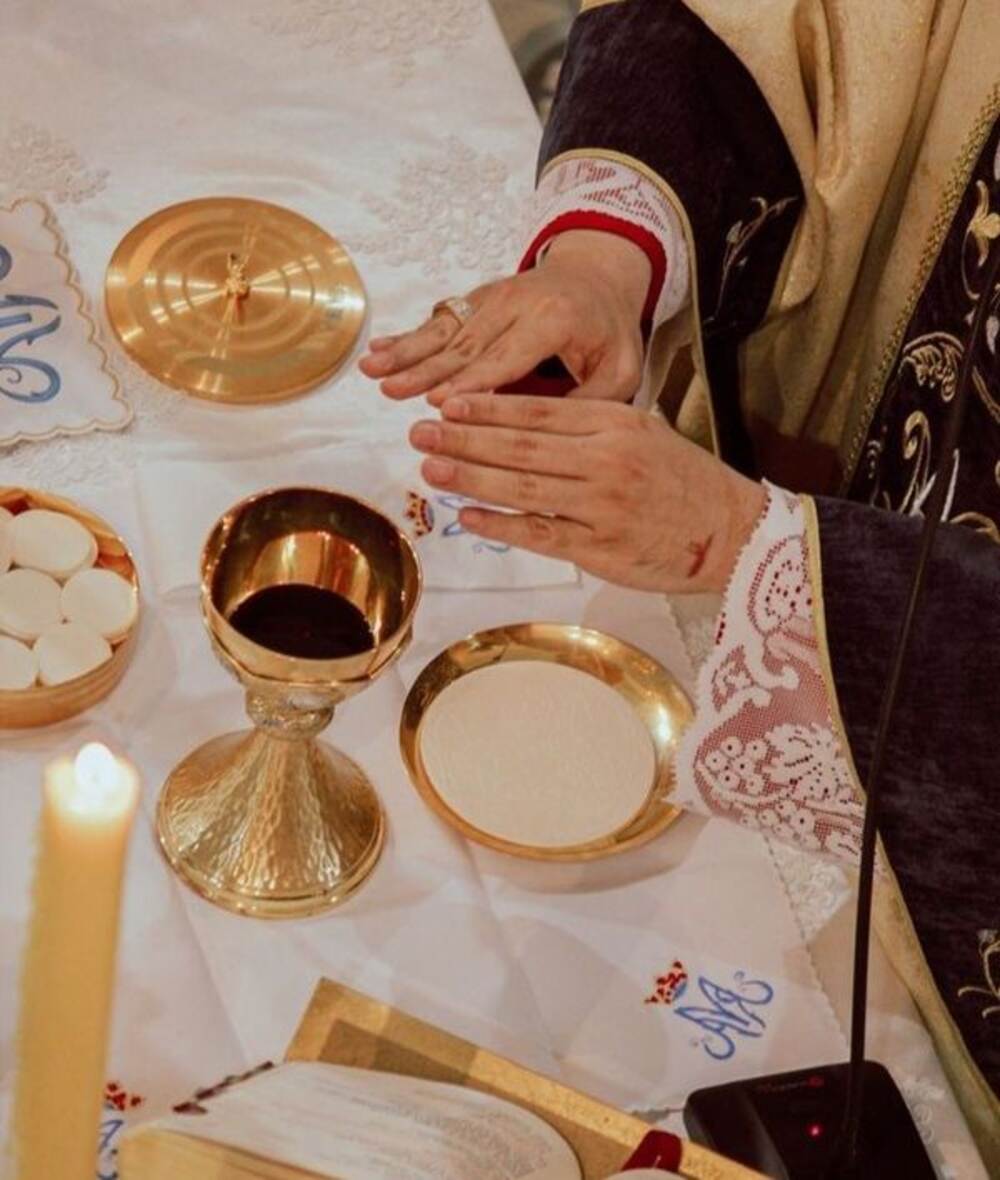
It is the central prayer of the Holy Mass and the most important moment of the Liturgy of the Eucharist. Through it, Our Lord descends, becomes present in the Eucharist, and offers Himself as a victim to the Father, renewing the sacrifice of the Cross.
The priest usually prays with his arms extended, in a prayerful posture and standing. With this posture, he recalls the image of Christ crucified , whose Passion is relived on the altar.
- Preface:
The celebrant invites the faithful to a solemn thanksgiving. It helps to prepare the soul to enter into prayer, trying to set aside all worldly thoughts to focus attention solely on the Lord, lifting up the heart to Him.
The priest takes up the expression of the assembly to make it his own:
Then, the specific reason for thanksgiving is specified, usually in direct relation to the liturgical season or feast being celebrated. They contain a precious synthesis of the mysteries of faith, which could be meditated upon carefully. For example, for the Lenten season, it is prayed:
The praise of the Preface finally leads into the hymn of praise of the heavenly choirs:
- Singing of the Holy:
- Prayers before the Consecration:
The first prayer connects the thanksgiving of the preface with the sacrificial action, the offering of a sacred gift.
Next, the priest intercedes for those who have entrusted themselves to his prayers and for all the faithful present:
The sacrifice for the living is offered in communion with all the saints:
It concludes with a universal petition: the eternal salvation of the faithful participating in the sacrifice:
- Epiclesis:
The priest implores the Father to bless and sanctify, through the Holy Spirit, the offering, so that it may become, for us, the Body and Blood of Christ.
At this moment, the priest places his hands over the offerings. This gesture symbolizes that the priest lays upon the victim his sins and those of the faithful. It is the great prelude to the sacrifice. The people kneel, in a sign of adoration, because the holiest moment of all has arrived:
- Consecration:
Next, the institution of the Eucharist is narrated and the priest, in the person of Christ and lending Him his voice, consecrates the bread and wine. He repeats exactly the actions and gestures of our Lord. At that moment, the most impressive miracle of all occurs: the transubstantiation.
The bread and wine are truly transformed into the Body and Blood of Christ, while retaining their external appearances. Jesus becomes present in the Eucharist truly, really, and substantially with His Body, Blood, Soul, and Divinity.
The priest elevates the host and the chalice for the faithful to honor them. Our attitude at this moment should be one of close unity in charity and in the sentiments that Christ had when dying on the cross, which are the same that He experiences at this moment as He immolates Himself on the altar.
- Anamnesis:
Now, the Church performs the memorial of the passion, resurrection, and glorious return of the Lord.
- Oblation:
The priest, in the oblation, presents to the Eternal Father the offering of His Son to reconcile sinful humanity with Him. Here the faithful can offer their life and sufferings in union with Christ for the redemption of the world.
- Intercessions:
Then, in the intercessions, the Church expresses that the Eucharist is celebrated in communion with the entire Church in Heaven and on Earth, of the living and the dead:
- Final Doxology:
The Eucharistic Prayer concludes with the Final Doxology in which the Most Holy Trinity is glorified, presenting and offering Christ as the Victim.
- You may be interested in: General Instruction of the Roman Missal
3. Our Father
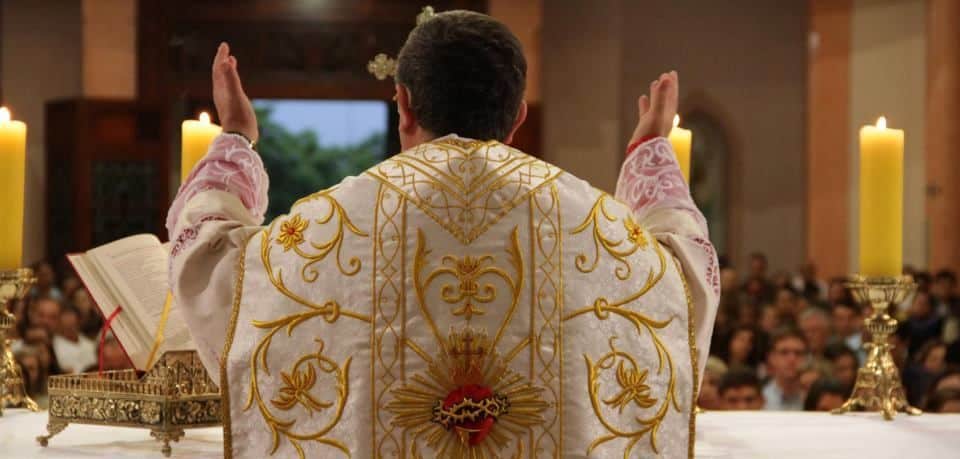
The Our Father is prayed as a preparatory prayer for Communion. In it, we ask for the “our daily bread”, which in the deepest sense refers to the Eucharist.
Through Christ’s sacrifice and His merits, we have become children of God. In the Eucharist, we find the remedy against temptation, and Jesus Himself, in our hearts, will overcome the Evil One when he tries to tempt us.
The last petition of the Our Father is extended. Because, possessing true peace, we will be able to keep ourselves free from sin and secure in all disturbance. Thus our souls can receive the bread of Heaven with more benefit.
4. Rite of Peace
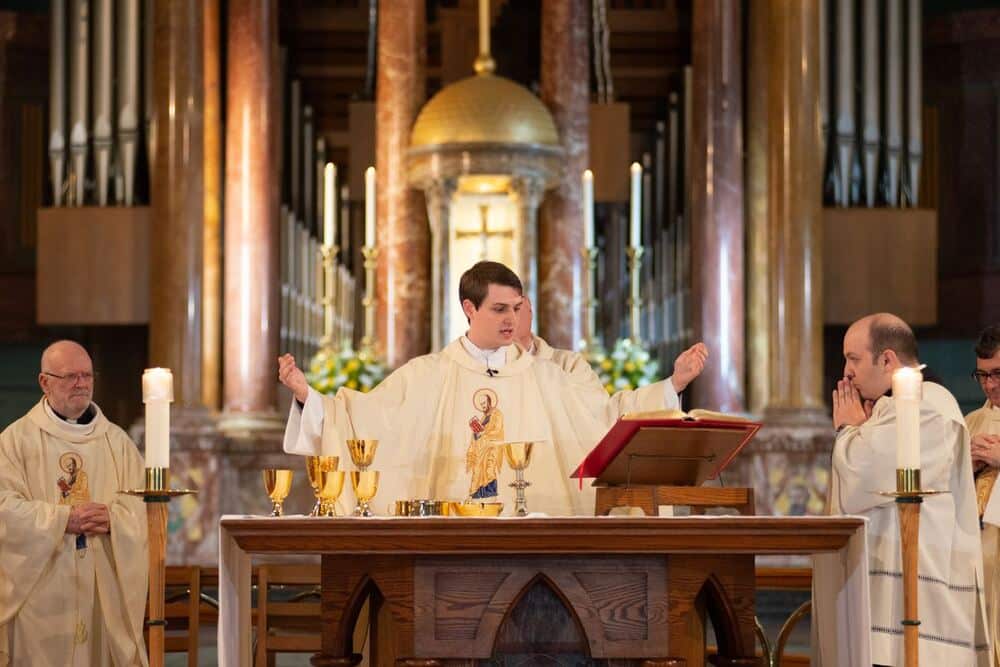
The rite of the sign of peace is prepared with a prayer that the priest addresses to Christ, the Prince of Peace.
This rite reminds us of the proper dispositions with which we should approach Communion. We cannot receive the Lord if we are at enmity with our neighbor.
5. Breaking of the Bread
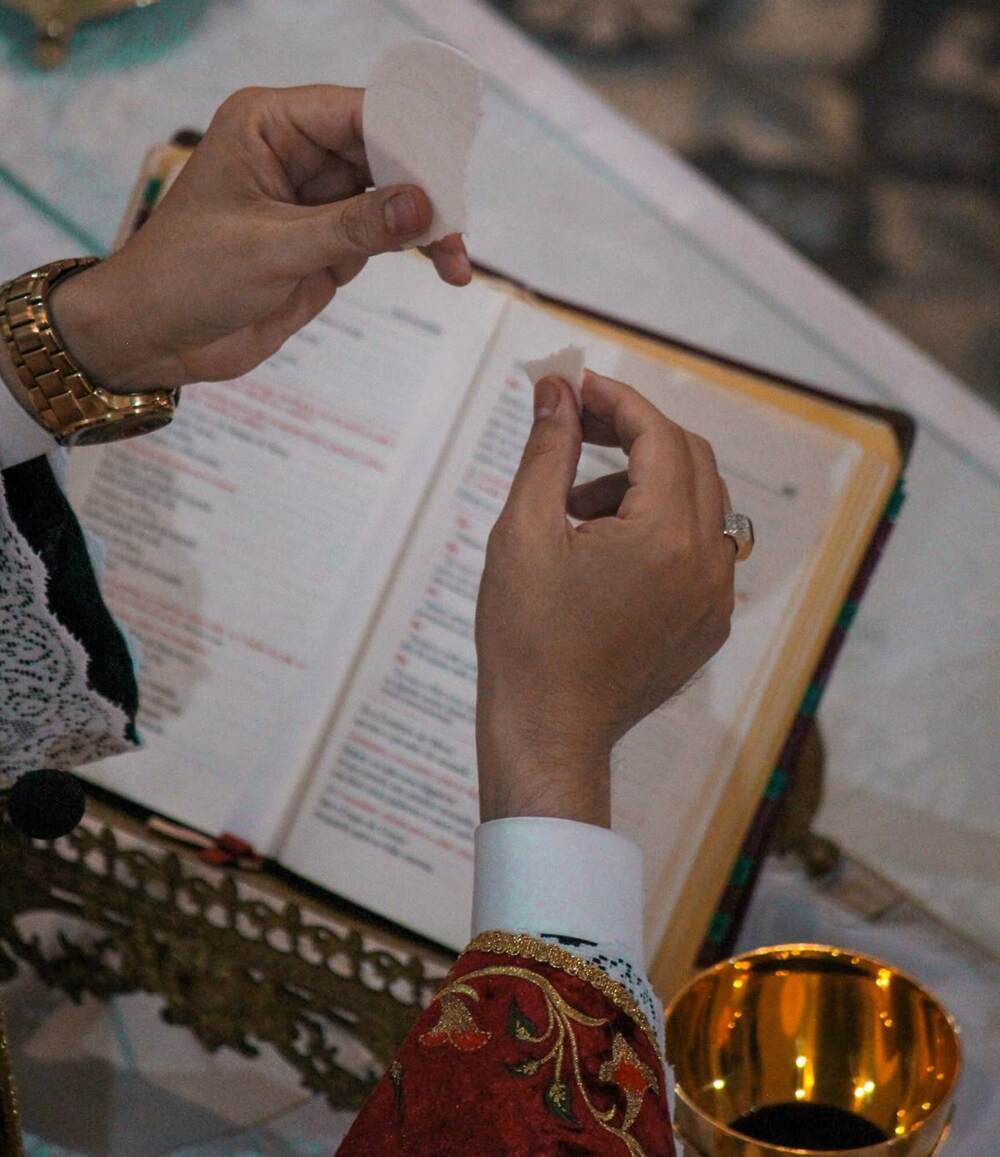
The priest breaks the host in imitation of the Lord. It represents the multiplication of Christ’s presence through the Eucharist. It recalls the death on the cross, by which His body was broken.
Then, in the commingling, he drops a particle of the consecrated bread into the chalice containing the Blood of the Lord, symbolizing the unity of the sacrifice, celebrated under both species. This unity is also perpetuated, as there is a single sacrifice of Christ that continues on altars until the end of the world.
Meanwhile, the faithful sing the Lamb of God:
This invocation characterizes the Lord as a victim, who bore the sins of the world and to whom mercy is pleaded.
- You may be interested in: Encyclical Ecclesia de Eucharistia (Saint John Paul II)
6. Preparation for Communion
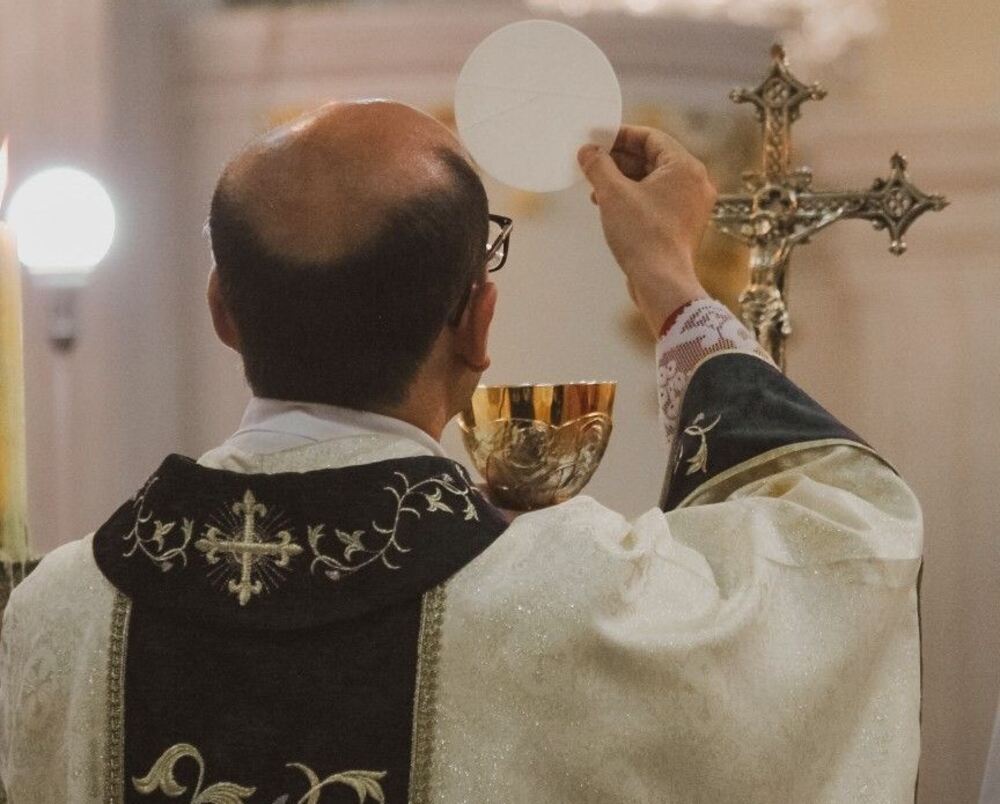
The priest prepares privately for communion, praying this or a similar prayer:
After praying, the celebrant takes the sacred Host and, showing it to the people, says:
7. Communion

Then begins the Communion of the faithful, who advance in procession towards the altar. It is normally accompanied by a song.
The Eucharist produces wonderful fruits in the soul. Through it, the most personal, intimate, and closest union imaginable with Christ is achieved. Additionally, we unite with the entire Church.
8. Post-Communion Prayer
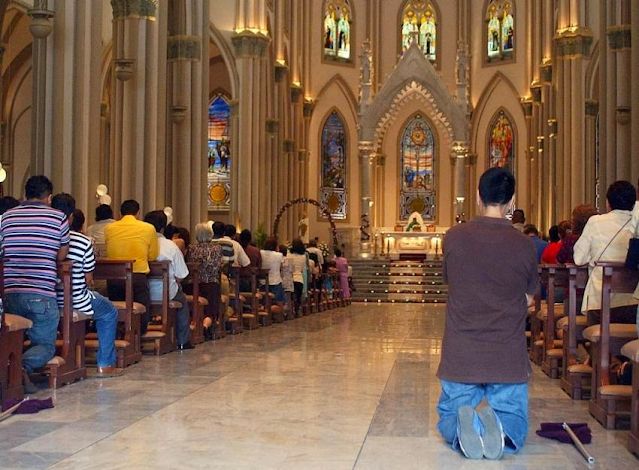
After communion, a moment of silence follows. The celebrant purifies the paten and chalice, while the faithful, kneeling or seated, converse in their hearts with the Divine Guest.
While purifying, the celebrant says in secret:
The Liturgy of the Eucharist concludes with the priestly prayer in which the celebrant gives thanks for the greatness of the gifts received and asks for the proper effects of the sacrament. Generally, it insists on the progress of Christ’s redemptive work in us and victory over internal and external difficulties. But, above all, it asks for eternal life.
To reflect on the Liturgy of the Eucharist:
You can use the Catholic Mass Times app to find the nearest Catholic church with Mass, Confession, and Adoration schedules. It will surely help you! Download it now.
What is the Liturgy of the Eucharist?
The Liturgy of the Eucharist is the most important part of the Holy Mass. In it, Jesus becomes present in the Blessed Sacrament to offer Himself again to the Father as a victim. He is immolated bloodlessly for our salvation. He intercedes before God to obtain His forgiveness for us.
When does the Liturgy of the Eucharist begin?
The Liturgy of the Eucharist begins with the Offertory.
Why is the Liturgy of the Eucharist important?
The Liturgy of the Eucharist is very important because in it the most impressive miracle of all occurs. Jesus becomes present in the Eucharistic species with His entire being: Body, Blood, Soul, and Divinity. Although with our senses we see bread and wine, Our Lord is truly there, alive and glorious.
How is the Liturgy of the Eucharist divided?
The Liturgy of the Eucharist is divided into 8 parts:
- Offertory and Alms,
- Eucharistic Prayer,
- Our Father,
- Rite of Peace,
- Breaking of the Bread,
- Preparation for Communion,
- Communion,
- Post-Communion Prayer.

